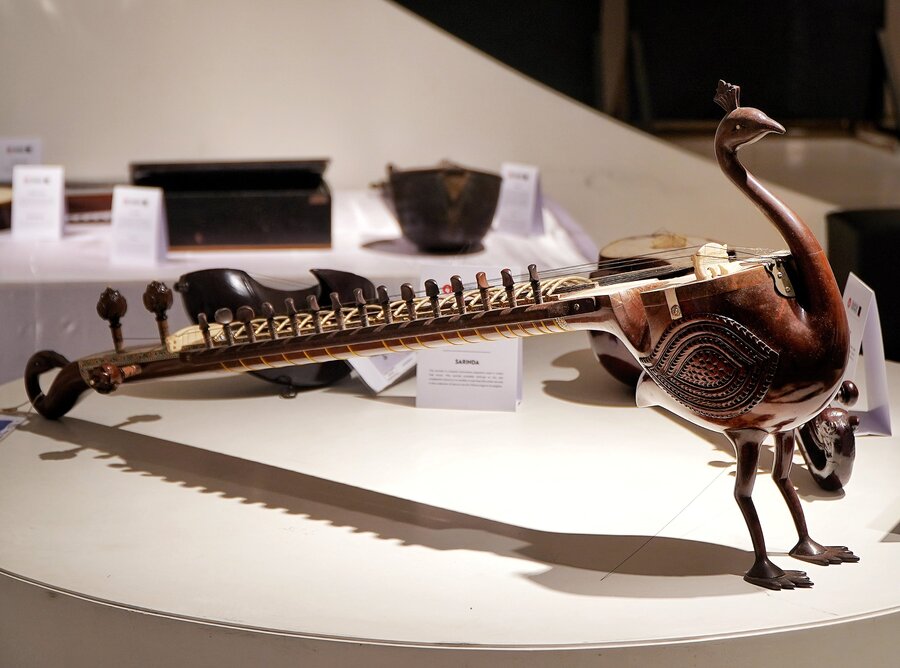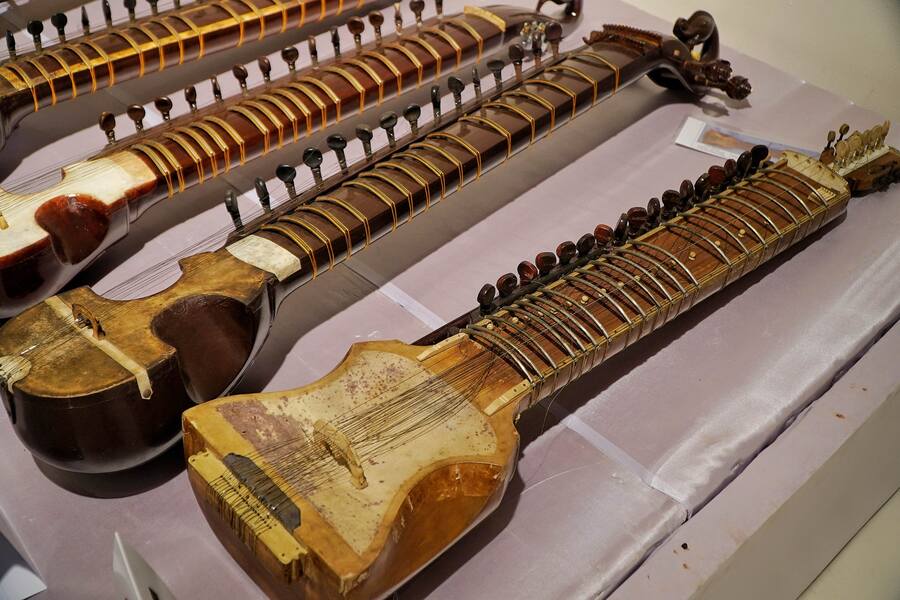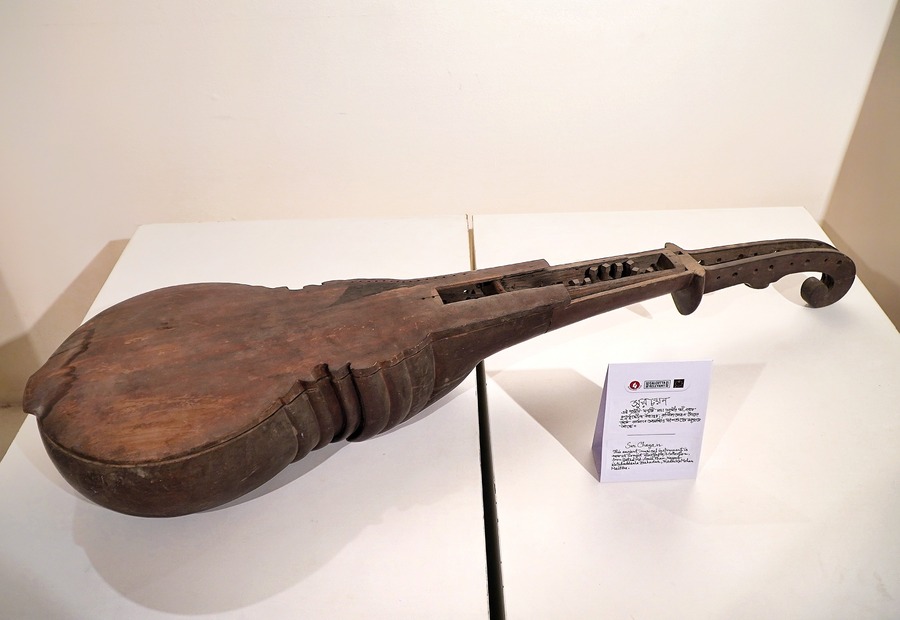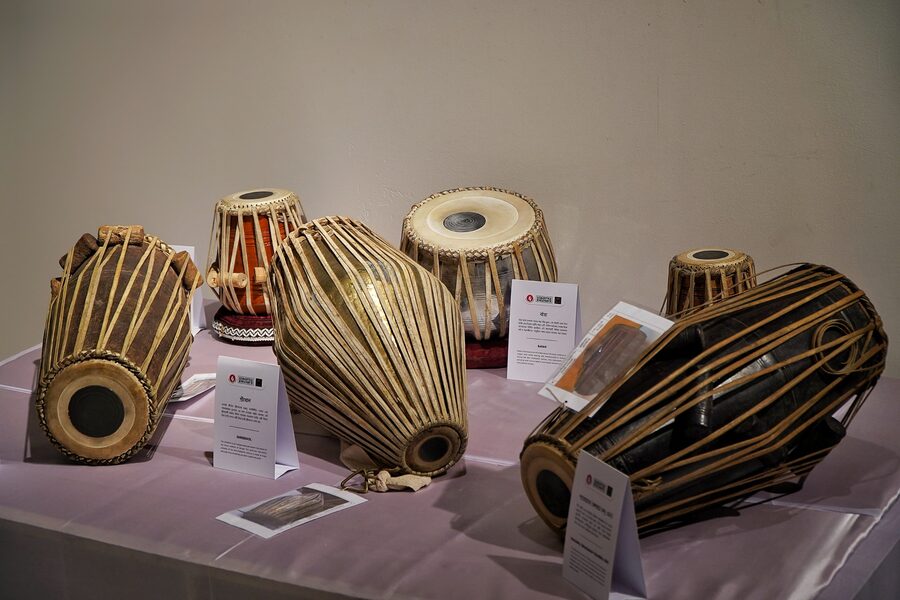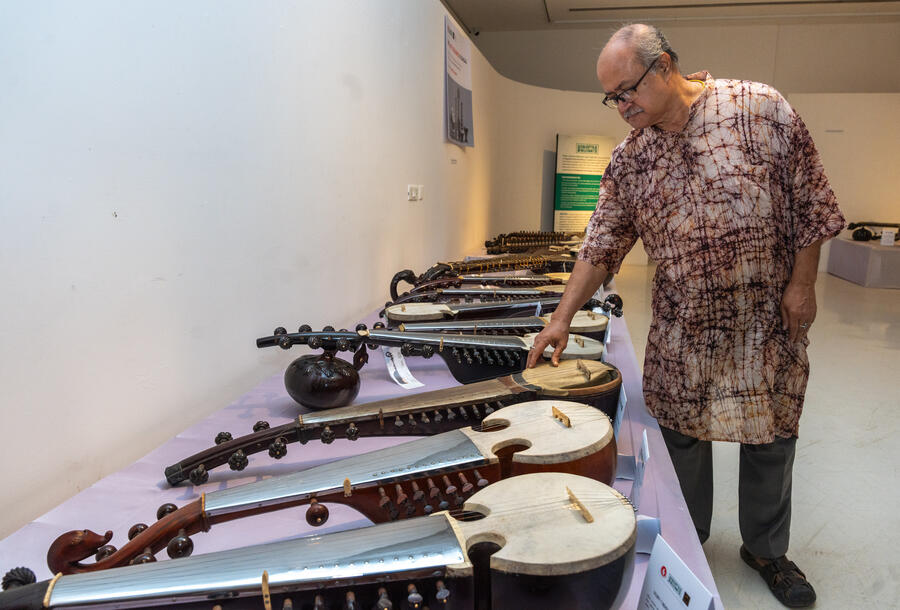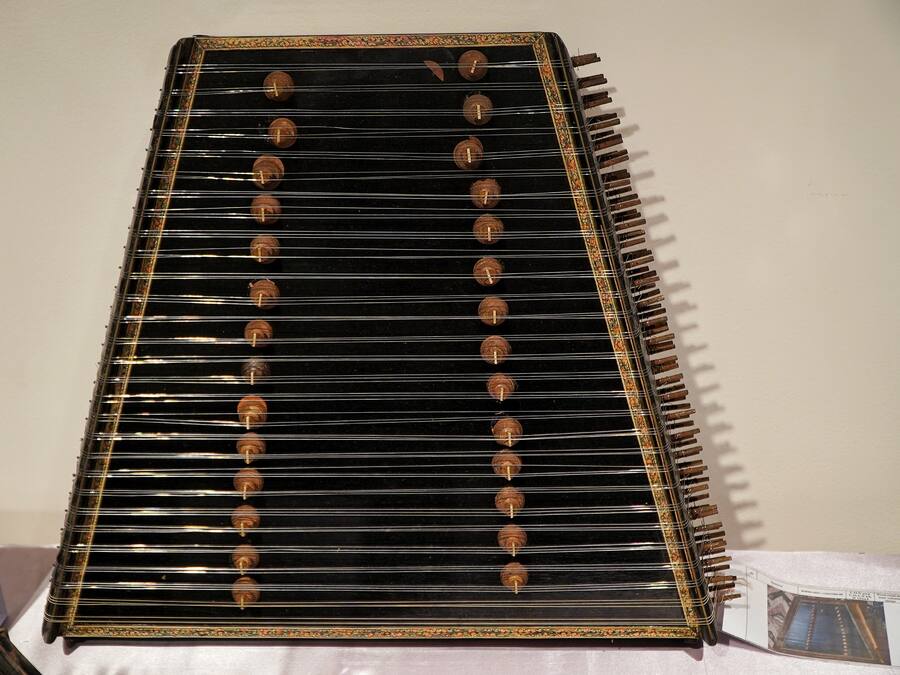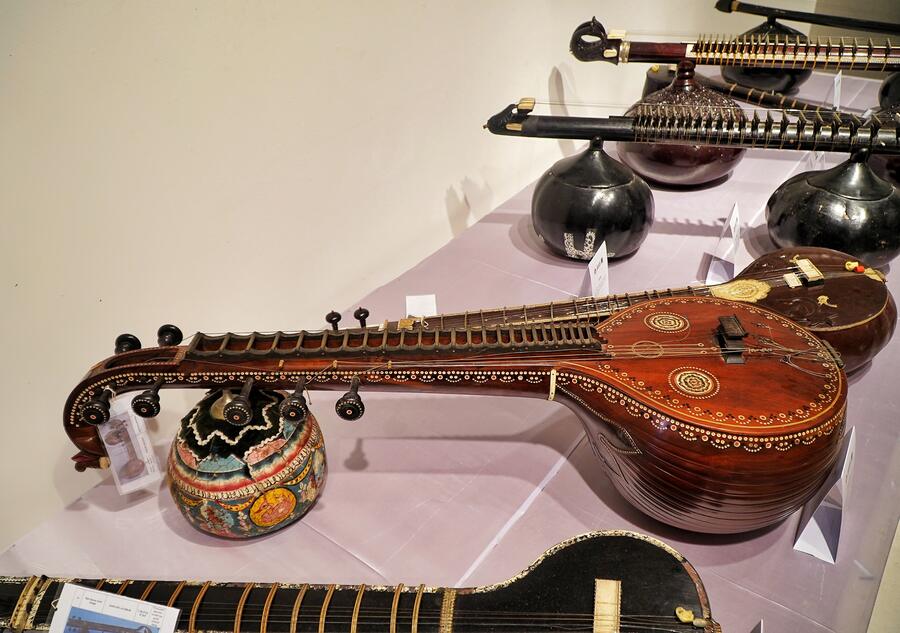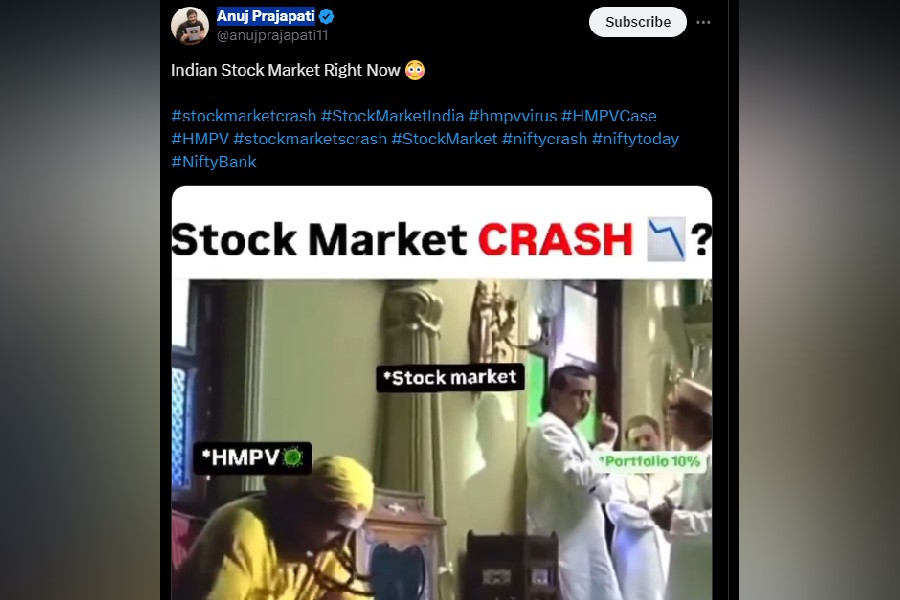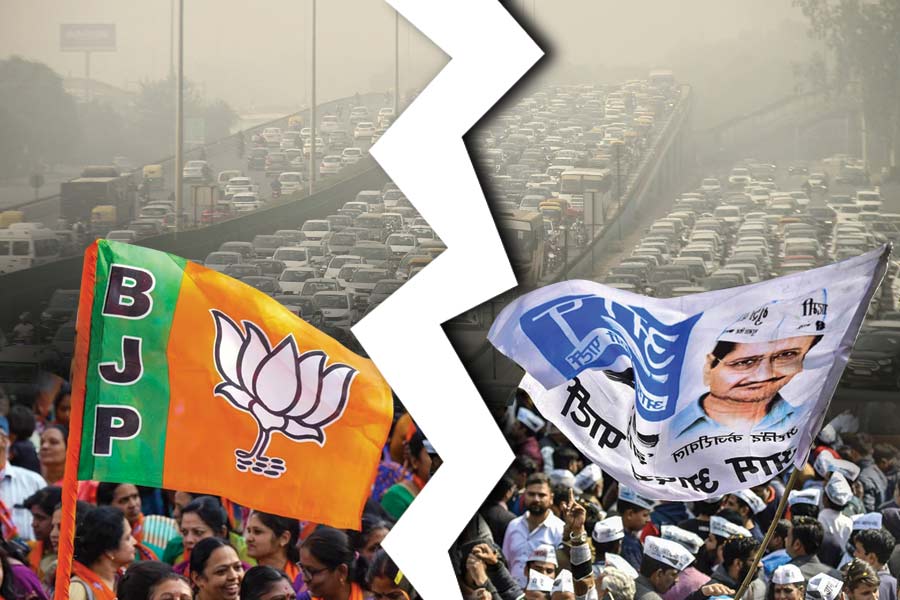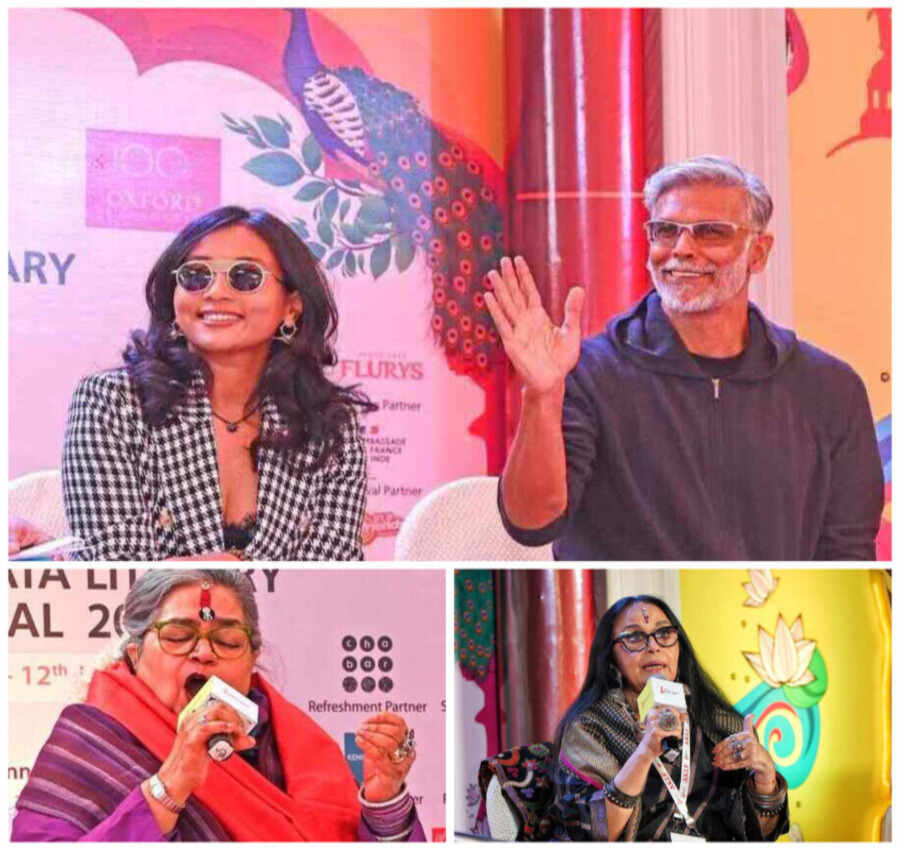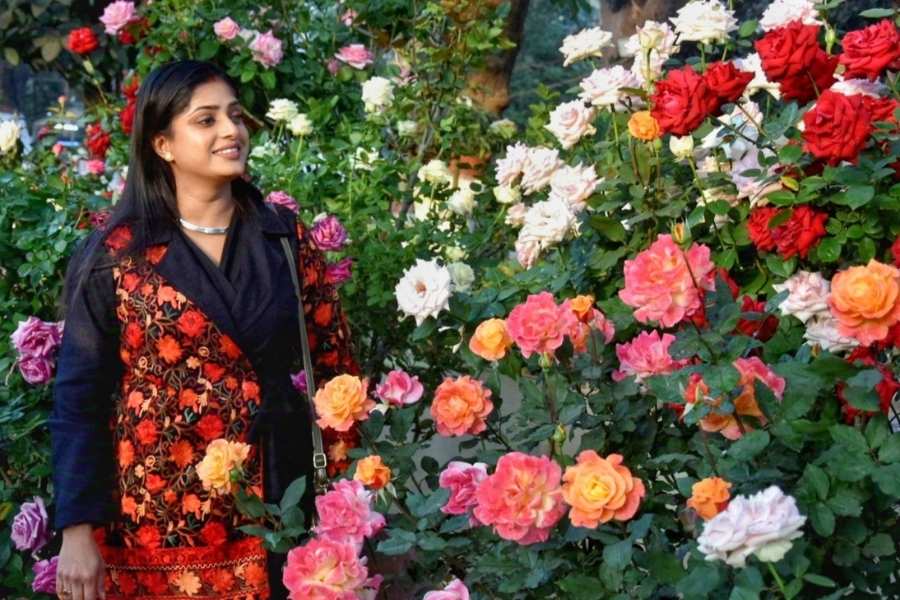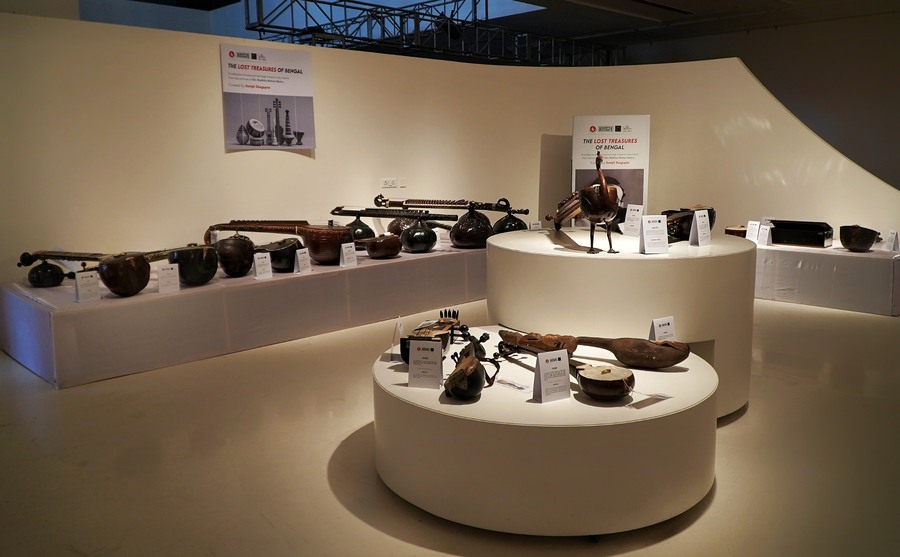
If you love Indian classical music, Kolkata Centre for Creativity (KCC) is the place to be until December 10. The art space has collaborated with Make Calcutta Relevant Again (MCRA) and Techno India Group to set up an exhibition titled ‘The Lost Treasures of Bengal’, offering a peek into the legacy of Indian instrumental music. Musician Somjit Dasgupta has curated almost 100 rare and historically significant instruments from the collection of his tutor, sarod maestro, the Late Radhika Mohan Maitra
Photographs by Soumyajit Dey and Make Calcutta Relevant Again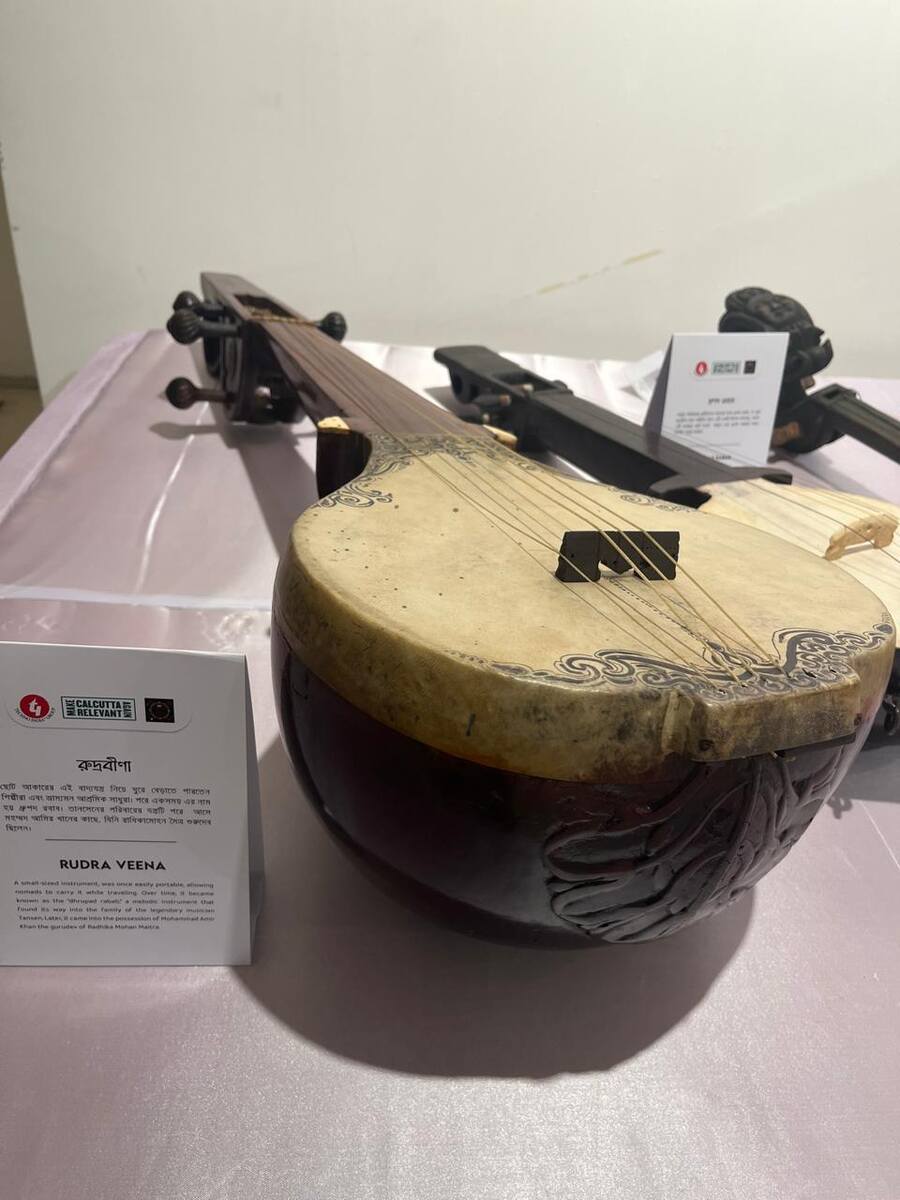
MCRA has helped restore many of the older instruments, including a 17th century Rudra veena, which is possibly the oldest playable Indian instrument in existence. It is said to have originally been in the possession of Akbar’s court musician, Tansen’s descendants, before being passed down to Radhika Mohan’s guru, Ustad Amir Khan
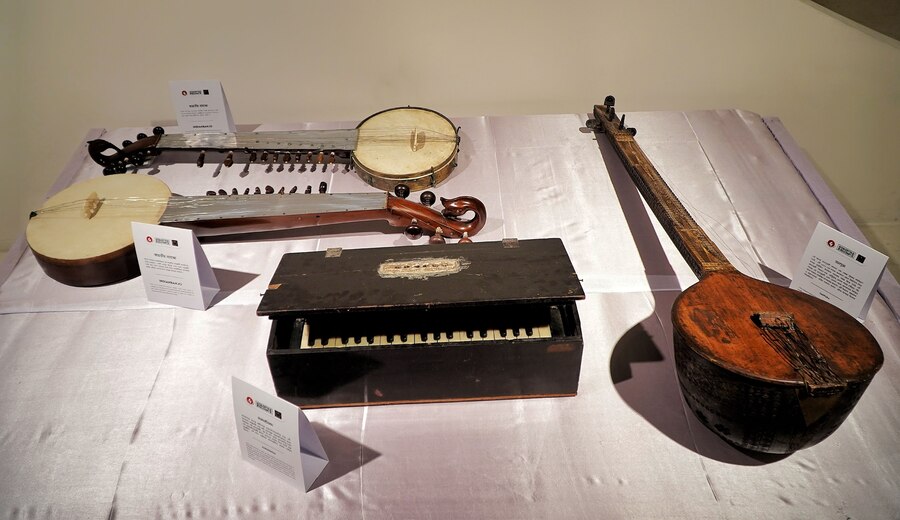
‘This is more than just an exhibition. It is a celebration of our history, a tribute to our maestros, and an inspiration for future generations. Collaborating on such an initiative is both a privilege and a responsibility, allowing us to bring the timeless artistry of legends like Radhika Mohan Maitra to the forefront,’ said Meghdut Roychowdhury, founder, MCRA
